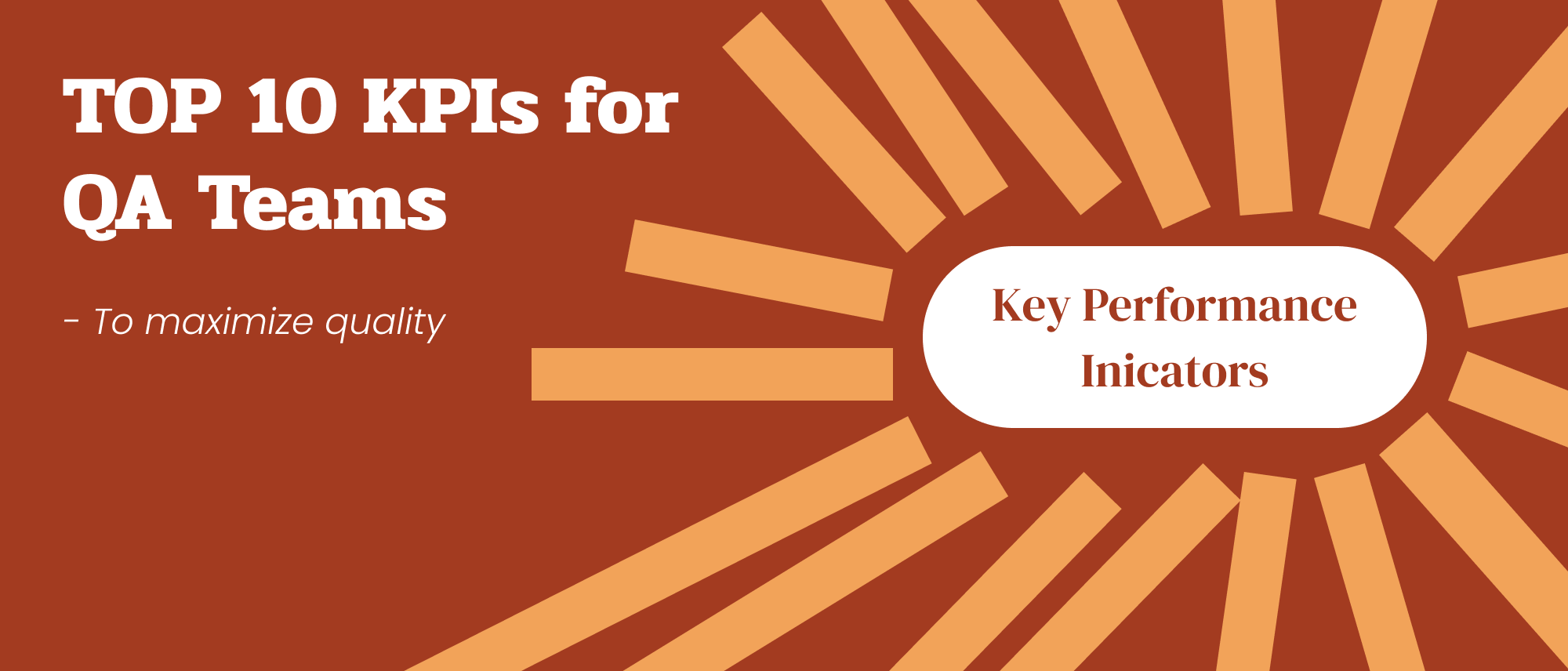Top 10 Key Performance Indicators (KPIs) for QA Teams

Quality assurance is that which ensures the delivery of software products meets the highest standards before the product reaches the end-users. Tracking KPIs for quality assurance is essential when evaluating QA team effectiveness. Such quality assurance KPIs not only help teams assess current performance but also underline areas of improvement, thus ensuring that overall business objectives are closely aligned with QA processes.
These are the top 10 QA KPIs that every QA team should be focusing on to really maximize efficiency and quality.
1. Defect Density
What is it? Defect density measures the number of defects found in a software module relative to its size (typically measured in lines of code, function points, or story points).
Why it matters: This QA KPI helps gauge the quality of the code being delivered. A lower defect density generally indicates better software quality. It's a good indicator of the overall robustness of the system.
How to measure:
Defect Density = (Total Defects) / (Size of the Module)
2. Test Coverage
What is it? Test coverage evaluates the extent to which your test cases cover the software’s codebase or functionalities. Effective test cases lead to higher defect detection rates. The success of your testing strategy often depends on how well these test cases are written.
Why it matters: Higher test coverage reduces the risk of undetected bugs and ensures that critical parts of the application are tested thoroughly. However, achieving 100% test coverage isn’t always necessary, as some areas might not be worth the time and effort to test extensively.
How to measure:
TestCoverage=(NumberofRequirements/FeaturesTested)/(TotalNumberof Requirements/Features)×100%
3. Defect Removal Efficiency (DRE)
What is it? DRE is the percentage of defects found and fixed during the testing phase compared to those found after the product is released.
Why it matters: This metric shows how effective your QA team is at catching defects before the product goes live. A high DRE indicates a strong QA process.
How to measure:
DRE=(DefectsFoundBeforeRelease)/(DefectsFoundBefore+AfterRelease)×100%
4. Mean Time to Detect (MTTD) & Mean Time to Repair (MTTR)
What is it? MTTD is the average time taken to detect a defect, while MTTR measures the average time taken to fix a defect once detected.
Why it matters: These QA KPIs help measure the efficiency of your QA team in identifying and resolving issues. Faster detection and resolution times indicate a responsive and efficient QA process.
How to measure:
- MTTD = Total Time Taken to Detect / Number of Defects
- MTTR = Total Time Taken to Fix / Number of Defects
5. Test Case Effectiveness
What is it? This KPI assesses how many test cases resulted in finding defects relative to the total number of test cases executed.
Why it matters: It helps evaluate the quality of test cases. Effective test cases lead to higher defect detection rates, ensuring that QA efforts focus on high-risk areas.
How to measure:
TestCaseEffectiveness=(DefectsFound)/(TotalTestCasesExecuted)×100%
6. Automation Coverage
What is it? Automation coverage measures the percentage of test cases automated compared to the total test cases that can be automated.
Why it matters: In agile environments, automation is key to faster releases. Higher automation coverage reduces manual effort and speeds up the testing cycle.
How to measure:
AutomationCoverage=(NumberofAutomatedTestCases)/(TotalTestCases)×100%
Suggested Reads- The Role of AI in Software Testing
7. Defect Severity Index
What is it? This QA KPI measures the impact of defects by assessing their severity levels.
Why it matters: By focusing on critical and high-severity defects, QA teams can prioritize fixes that impact user experience and business functionality the most.
How to measure:
DefectSeverityIndex=(SumofSeverityRatings)/(TotalNumberofDefects)
8. Test Execution Time
What is it? This metric evaluates how long it takes to execute a set of test cases.
Why it matters: Tracking test execution time helps identify bottlenecks in the QA process, especially for regression testing and automation scripts. It can guide optimization efforts to speed up the testing cycle.
How to measure: TestExecutionTime=TimeTakentoExecuteTestCases/NumberofTestCases
9. Customer-Reported Defects
What is it? The number of defects reported by end-users after the release.
Why it matters: A lower number of customer-reported defects indicates that your QA process is effective at catching issues before the software goes live.
How to measure:
Customer−ReportedDefectsRate=(CustomerDefects)/(TotalDefects)×100%
Suggested Reads- How to Write a Good Defect Report in Software Testing
10. Sprint Goal Success Rate
What is it? This QA KPI tracks whether the QA team meets the testing goals set for each sprint.
Why it matters: In Agile development, the ability to meet sprint goals is crucial for timely releases. It reflects the team's alignment with project timelines and overall efficiency.
How to measure:
SprintGoalSuccessRate=(SprintsMetTestingGoals)/(TotalSprints)×100%
Conclusion
The understanding and application of these KPIs will really make your QA team much more effective. By following these metrics, the teams continuously improve processes, reduce bugs, and ensure a high-quality product. For new learners in the field, focusing on these QA KPIs will help in aligning testing practices with industry standards, where every project could possibly show value.
Frequently Asked Questions?
Why is defect density important for QA teams?
It measures defects per code unit, indicating software quality and system robustness. Lower density suggests better code quality.
What's the difference between MTTD and MTTR?
MTTD measures average time to detect defects, while MTTR tracks average repair time after detection.
How can I improve test case effectiveness?
Focus on high-risk areas, maintain comprehensive coverage, and regularly analyze defect patterns to optimize test cases.
Need Expert Help?
While tracking QA KPIs is essential, implementing them effectively requires expertise. F22 Labs offers comprehensive quality assurance services, helping organizations establish and monitor the right KPIs for their testing processes. Our experts can guide you in Contact Us today!
